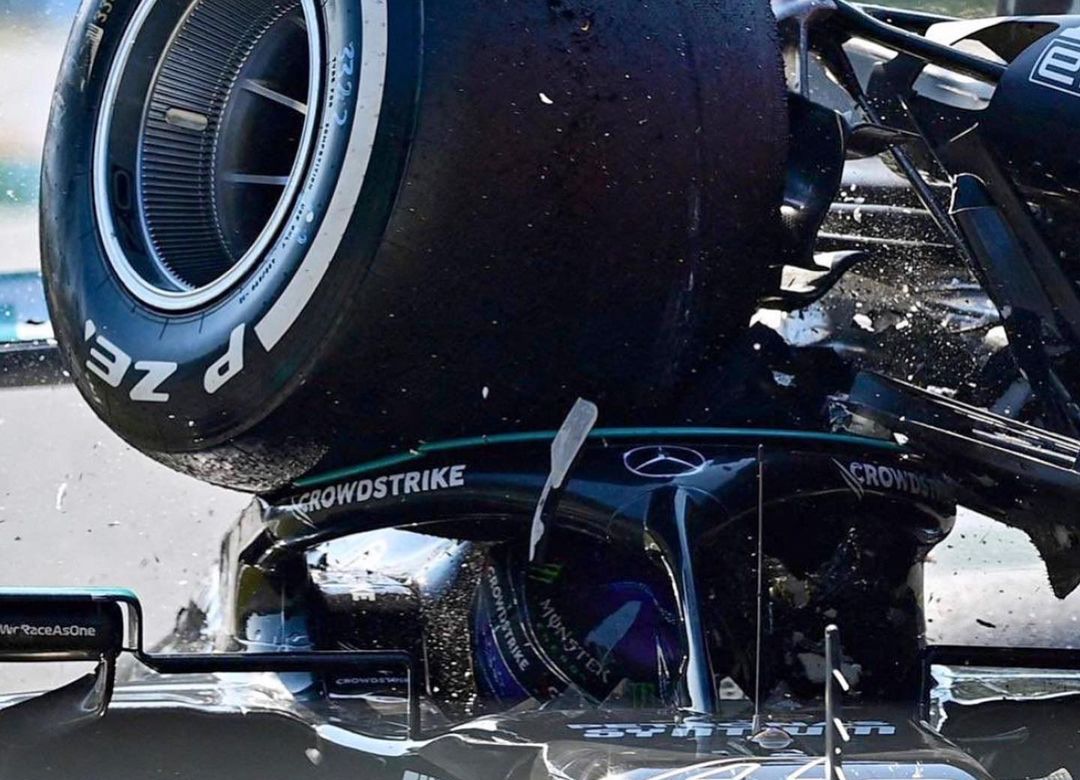Motorsports Racing News & Blog Articles
Hamilton ‘not lucky’ to survive Italian Grand Prix crash
Clive Temple, Motorsport MSc Programme Director and Senior Lecturer at the Advanced Vehicle Engineering Centre at Cranfield University, has commented on the Halo safety device which saved Sir Lewis Hamilton’s life in a crash with Max Verstappen at the Italian Grand Prix last Sunday.
Click here to subscribe to our print edition!
(function($){ $(window).on("resize", function(){ var sid = "9"; var object = $(".bsaProContainer-" + sid + " .bsaProItemInner__img"); var animateThumb = $(".bsaProContainer-" + sid + " .bsaProAnimateThumb"); var innerThumb = $(".bsaProContainer-" + sid + " .bsaProItemInner__thumb"); var parentWidth = "728"; var parentHeight = "90"; var objectWidth = object.width(); if ( objectWidth < parentWidth ) { var scale = objectWidth / parentWidth; if ( objectWidth > 0 && objectWidth != 100 && scale > 0 ) { animateThumb.height(parentHeight * scale); innerThumb.height(parentHeight * scale); object.height(parentHeight * scale); } else { animateThumb.height(parentHeight); innerThumb.height(parentHeight); object.height(parentHeight); } } else { animateThumb.height(parentHeight); innerThumb.height(parentHeight); object.height(parentHeight); } }); $(document).ready(function(){ $(".bsaProItemInner__img").trigger("resize"); }); })(jQuery);The Halo was tested extensively at Cranfield Impact Centre during its development, overseen by the FIA (Federation Internationale de l’Automobile), prior to its adoption, and the issue of driver protection in motorsport has been investigated in a number of Motorsport MSc projects at Cranfield over the years.
Clive Temple said: “Hamilton was not lucky – it is a fact that engineering and science underpin all of this work which ensures drivers are safe. Safety is the primary concern in motorsport.
“The Halo was introduced in 2018 and proved its worth in that season when Charles Leclerc, who was then driving for Alfa Romeo, was protected from Alonso’s flying McLaren. We also had the Grosjean fireball incident in November 2020 and again the Halo came to the fore there along with other safety measures such as the deformable nose cone protection, in-helmet safety system and the barrier, itself.
“It’s been shown that the Halo is now one of the major safety devices that have served all drivers who are racing single-seaters from F1 all the way through to Formula 4.
“As this crash has proven, the Halo is exceptionally strong and is integral to other safety-critical elements within the car. Hamilton experiencing Verstappen’s car coming on top is probably around the equivalent of close to a London double-decker bus landing on top of the car.
“The current Halo is designed to withstand 100 kilonewtons – 10.2 tonnes – and a modern double-decker is around 12 tonnes or so. 10.2 tonnes is also the equivalent of two African elephants landing on the race car. This is a very strong structure indeed.
“We’re moving towards Halo 4 which will feature in the new season for the 2022 F1 cars. This will represent a further development of the Halo concept and an even stronger device.”
Hamilton was not lucky – it is a fact that engineering and science underpin all of this work which ensures drivers are safe. Safety is the primary concern in motorsport.
Cranfield University has undertaken research, consultancy and testing for the motorsport sector since the 1970s.
Cranfield’s Advanced Motorsport Engineering MSc (previously Motorsport Engineering and Management) has been running since 2000-2001, making it the longest-running master’s programme covering motorsport engineering which is currently accredited by the Royal Aeronautical Society and the Institution of Engineering and Technology, with accreditation renewal pending from the Institution of Mechanical Engineers.
Cranfield’s Advanced Vehicle Engineering Centre focuses on the development, application and evaluation of advanced vehicle technologies to help make vehicles more capable, safer, lighter, greener and more efficient.
Cranfield introduced the first master’s course covering mechatronics and motorsport – the Advanced Motorsport Mechatronics MSc – in the world in 2018.
(function($){ $(window).on("resize", function(){ var sid = "49"; var object = $(".bsaProContainer-" + sid + " .bsaProItemInner__img"); var animateThumb = $(".bsaProContainer-" + sid + " .bsaProAnimateThumb"); var innerThumb = $(".bsaProContainer-" + sid + " .bsaProItemInner__thumb"); var parentWidth = "728"; var parentHeight = "90"; var objectWidth = object.width(); if ( objectWidth < parentWidth ) { var scale = objectWidth / parentWidth; if ( objectWidth > 0 && objectWidth != 100 && scale > 0 ) { animateThumb.height(parentHeight * scale); innerThumb.height(parentHeight * scale); object.height(parentHeight * scale); } else { animateThumb.height(parentHeight); innerThumb.height(parentHeight); object.height(parentHeight); } } else { animateThumb.height(parentHeight); innerThumb.height(parentHeight); object.height(parentHeight); } }); $(document).ready(function(){ $(".bsaProItemInner__img").trigger("resize"); }); })(jQuery);Hamilton is ‘not lucky’ according to the safety device developers.

Verified. The Halo saved Lewis’ life today.  . Thank you again to the FIA and to everyone who works to make our sport a safer place.
. Thank you again to the FIA and to everyone who works to make our sport a safer place. 
The post Hamilton ‘not lucky’ to survive Italian Grand Prix crash appeared first on Paddock Magazine.
Copyright
© Paddock Magazine

